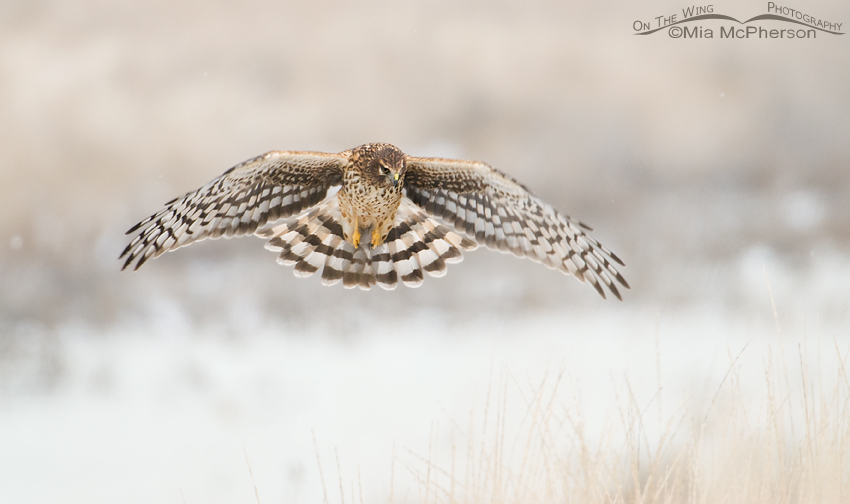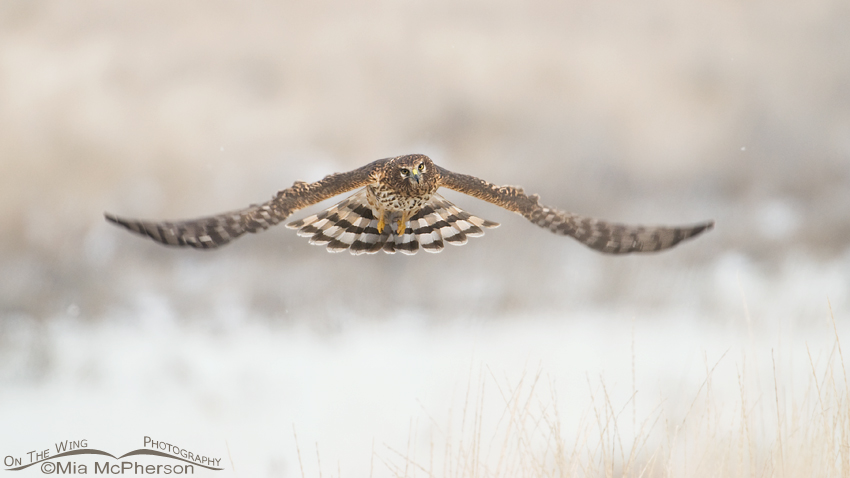 Hovering Northern Harrier (Circus hudsonius), 1st frame – Nikon D200, f6.3, 1/640, ISO 400, +0.7 EV, Nikkor 200-400mm with 1.4x TC at 400mm, natural light, not baited
Hovering Northern Harrier (Circus hudsonius), 1st frame – Nikon D200, f6.3, 1/640, ISO 400, +0.7 EV, Nikkor 200-400mm with 1.4x TC at 400mm, natural light, not baited
I was digging through my archives to place my 2011 photos into a new external hard drive when I came across these two images of a Northern Harrier hovering that I had taken in January of this year and decided to post them because of the low light conditions I photographed the harrier in.
Utah weather can be unpredictable anytime of the year but during the winter it can look bright and sunny where I live and then when I get to my location to photograph it can be quite a different story. The Salt Lake Valley has mountains to the east and the west and mountains do make their own weather. Plus given the fact that Northern Harriers prefer areas with marshes or shorelines and the fog found there can create even more challenges.
These two images were taken when there was snow falling, the light was low and there was some fog. I had to increase my exposure compensation so that the images would not be under exposed which decreased my shutter speed giving the images some motion blur. Newer cameras than mine do handle higher ISO settings than 400 quite well which would give the users of those cameras higher shutter speeds than I was able to get with my trusty, but old, Nikon D200.
 Hovering Northern Harrier (Circus hudsonius), 2nd frame – Nikon D200, f6.3, 1/640, ISO 400, +0.7 EV, Nikkor 200-400mm with 1.4x TC at 400mm, natural light, not baited
Hovering Northern Harrier (Circus hudsonius), 2nd frame – Nikon D200, f6.3, 1/640, ISO 400, +0.7 EV, Nikkor 200-400mm with 1.4x TC at 400mm, natural light, not baited
I don’t mind the motion blur in these images and because northern harriers hunt by looking down at the ground for their prey I was very happy to get eye contact in both frames. The habitat with dried vegetation, snow on the ground and bits of falling snow make the photos appealing to me as do the poses that the harrier gave me.
I could have used some fill flash but at least 99% or more of my images are taken in natural light. I prefer photographing birds without flash partly because I don’t care for the “flashed” look and because I also do not want to startle or scare the birds. I’ve seen people get close to birds and when the flash goes off…so does the bird in many cases.
Appealing and compelling images can be produced even when the conditions are not the best. I enjoy the challenges that low light creates, it test my skills as a photographer and I like that. Low light images are also a challenge to post process and keep the photo looking like what it is, an image taken in low light.
Mia


Both are great shots. The only time I ever use flash is when I need to throw a little fill light up into the trees.
Thank you Bob.
LOVE these photos, esp. that second one – very, very nice!
I love the first one!! It totally looks like he’s standing still!! The low ISO advances have really made flash an even more rare event outside than ever before. Imagine shooting this same scene with a D3S or even a D7000, you’d have fast shutter and crystal clear images even at 6400!!